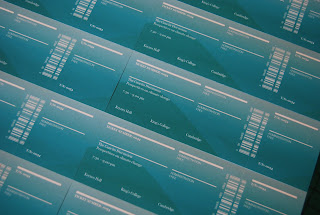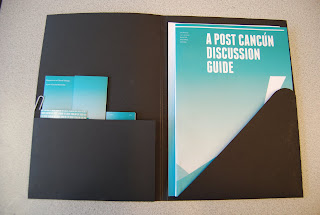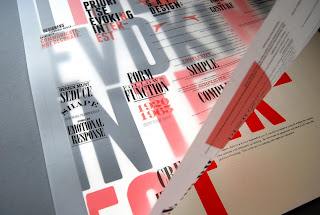Over the course of my FMP I completed 8 projects plus my design context publication. I had to drop a project, one that I really wanted to do, due to not having enough time but am glad none the less that I have something to work on once I have handed in. I am pleased that all of the briefs I completed have developed my design skills and will help inform the initial steps of my professional career and provide a solid technical platform on which to base my developing practice. Also I feel confident that my portfolio is strong now, showing a range of disciplines across a variety of deliverables.
My main regret is that I realised where my passion lies in design a little too late. Had I researched more thoroughly or had my moment of epiphany occurred just a week earlier I would have been able to squeeze in the ‘discussion events’ project and leave a smaller project such as ‘Break out Lucille’ where it was before exploiting its potential range. My epiphany was that responsibility and my own ethical standpoint was going to inform the projects I chose to work on, the audiences I wanted to engage with and the message driven content of my work. Up until that point my focus had been on the technical aspects of typography and layout, but once I was comfortable with the flexibility of my discipline in these skills, I was able to broaden my thoughts to the wider potential of subject matter and context.
The ‘Cancún debate’ project was the most influential of my FMP. Dealing with a live brief, that could potentially make a significant difference to people’s attitudes towards the environment changed my state of mind, from being a some-what impartial designer, to an emotional designer. I learned that being involved with a brief emotionally as well as objectively greatly enhanced the dedication to the message, and I felt as thought I could empathise with the audience on a clearer and more effective level. The research undertaken for my context publication (‘Discipline, Responsibility and Awesome Design) helped me re-evaluate where I was taking the project and made it much more accessible for its intended audience.
My typographic skills have improve to no end throughout the FMP thanks to the majority of projects I undertook, but I still feel as thought I can learn a lot more and am keen to buy books and find new sources of inspiration. I had felt as though my rationale has limited me a little in terms of creativity, but am well aware that I am or was a student and was therefore still learning and should maintain my dedication and focus to the rationale before neglecting it for art direction. Art direction and creating conceptually intelligent and creative solution across all media is certainly going to come into play more in my future; I do not see myself laying out type on a grid for ever… However I have a strong passion for type, the form of type and the use of language though visual form, so I maintain that this will be the main feature of my practice.
Towards the end of the FMP I designed an identity for the photographer Rob Walker. This was to test my speed at turning around a brief. I was interesting to find out whether what I had learned throughout the FMP had paid off. I was pleased to find that it had. I worked very quickly and efficiently, creating a strong visual concept and identity and applied it to a concise, relevant range in just three days. This fills me with confidence, and I will use self-directed short turn around identities as a concept building practice whenever I have no other work to be doing.
My main downfall was documenting my development work. I like to work quickly so that ideas are fresh and full of enthusiasm, and find that by blogging especially breaks up those moments of inspiration and un-joins them. However I concede that the typed form of evaluating ones own work is useful, as it focuses thought into physical form and can be very useful for developing ideas as well as clarifying.
Overall I have stayed on top of things throughout my FMP, slipping up only a few times, missing a print slot on one occasion and not being fully prepared for a crit. But what I have learned from this, is that things get in the way, and things go wrong, all I can do is be as efficient as possible to minimise these occurrences. I am simply overjoyed that I have come to the end of what is has been a challenging three years, with as much passion for the subject as I could have hoped for. Also I would like to thank everyone involved with the course, I doubt I would have had the same sense of fullfillment had I been elsewhere for my education.





















































